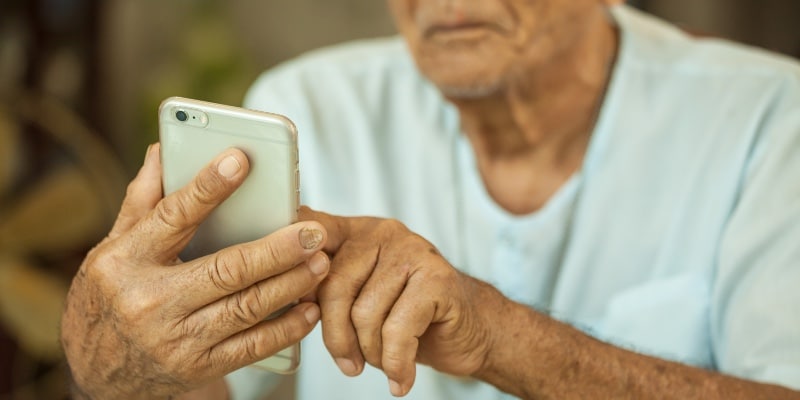Over the last several months, we’ve explored the importance of addressing the social determinants of health in order to advance health equity. Social determinants are the conditions in which people are born, grow, live, work and age, and they play a large role in determining health status and disparities. For instance, things like income, access to transportation, and childcare availability affect patients’ ability to receive care in-person. This is why telehealth is an important tool for expanding access to care and reducing health inequities—it removes many of the barriers to seeing a doctor.
For example, telehealth reduces one of the biggest barriers to accessing healthcare: cost. In 2017, a Health Affairs survey found that telehealth appointments were around 50% less expensive than in-person appointments. This doesn’t factor in the cost of gas and parking (if one drives) or public transport (if one needs it). It also doesn’t factor in the cost of childcare (if needed), or lost wages (assuming the patient needed to take time out of work to go see the doctor).
Cost is not the only socio-economic barrier to in-person healthcare. A number of social determinants come into play when talking about access, and they interact with each other in complex ways. For instance, the rise in telehealth during the pandemic has brought into focus another social determinant: access to broadband. Without stable internet telehealth becomes unreachable, and detrimentally so for the patients who would benefit from it the most.
This reality brings the digital divide into a harsh light. In a new, heavily-connected world, are efforts towards health equity actually hitting their mark?
What is the digital divide?
The digital divide is the gap between those with consistent broadband internet access and the digital literacy to understand technology, and those without. The FCC reports that 21 million Americans do not have consistent internet access. However, the number is likely even greater. In fact, a 2019 Microsoft study found that nearly half of the US population lacked access to broadband-speed internet.
Digital literacy, which is the ability to find, understand, and use information on various digital platforms including telehealth, is also a barrier. Digital literacy encompasses things like downloading telehealth apps, knowing how to connect to the internet, understanding where and accessing their personal health information, and how to protect yourself online. In a Pew study that provided more than 4000 participants ten questions about digital literacy, in topics ranging from online safety to social media, only 20% got seven or more correct.
As the digital divide grows, so does health equity
The digital divide is exacerbating the lack of telehealth adoption on many different levels. Rural communities are more likely to report broadband issues that would impede telehealth adoption, while also facing in-person care shortages. And low-income communities often cannot afford the higher speeds necessary for operating online patient portals, let alone video calls with providers.
Like other social determinants that disproportionately impact communities of color, lack of internet access is acutely felt in certain communities. Black and Hispanic patients, for instance, are less likely to use telehealth for a variety of complications, such as language barriers and a lack of consistent healthcare providing telehealth services Many of these patients want telehealth care delivery, but simply can’t access it, leading to greater health inequities along racial lines.
It’s clear that when telehealth is unobtainable, the gulf between who can and cannot receive healthcare becomes more pronounced. Fortunately, we’re beginning to see promising examples of programs that are working to close the digital divide.
When schools and healthcare systems transitioned online during the beginning of the pandemic, some cable and internet providers stepped up to help address this gap in coverage. However, many of these solutions were temporary, offering just a couple of free or discounted broadband access in 2020. Long-term solutions need to be put into place to effectively address this divide. Elon Musk’s Starlink, for example, is designed to provide internet access to areas where connectivity is an ongoing issue. Consumers only need a small satellite and a router to connect to high-speed internet for a low monthly fee.
When it comes to digital literacy, some healthcare providers are employing patient navigators to assist with telehealth utilization. But, so far, this is not a universal practice. It also does little to help those who lack necessary internet connection.
The healthcare industry is rapidly embracing the internet as a care delivery platform. Telehealth is booming, and odds are it will continue to do so even beyond COVID. But the digital divide shows that it’s not enough to provide telehealth, if the people who would benefit from it the most cannot use it. The divide is deserving of a high level of consideration and intervention. By adequately addressing it, providers will realize significant advances in health equity.



